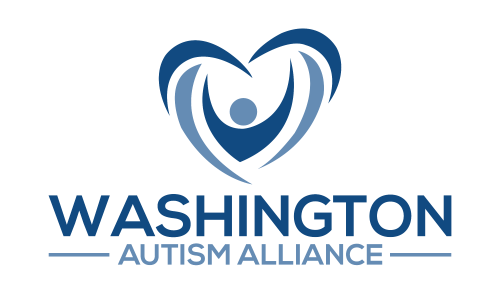By Allison L. Winward, M. Ed.
 Washington is the first state in the country to have its waiver from the No Child Left Behind law revoked. Under this waiver, the state was exempt from certain limitations of NCLB while its schools continued to make progress in areas such as student achievement and teacher evaluations. The waiver gave school districts more discretion in how Title I funds were distributed and used in schools within the district. Loss of the NCLB waiver will impact how Title I funds can be used.
Washington is the first state in the country to have its waiver from the No Child Left Behind law revoked. Under this waiver, the state was exempt from certain limitations of NCLB while its schools continued to make progress in areas such as student achievement and teacher evaluations. The waiver gave school districts more discretion in how Title I funds were distributed and used in schools within the district. Loss of the NCLB waiver will impact how Title I funds can be used.
Families of students with autism may wonder how the waiver loss might affect funding and services for their special needs children. Federal funding for special education services falls under the Individuals with Disabilities Education Act. IDEA funds are separate from Title I funds, and the federal government cannot cut or divert IDEA funds due to the loss of the NCLB waiver.
What is Title I? The Title I (pronounced “title one”) program provides funds from the federal government to local school districts to improve the education of disadvantaged students from birth through 12th grade. It is the largest federal program supporting elementary and secondary education, and the amount of funds received is related to the number of students which qualify for free or reduced lunch prices. In Washington, 46.1% of students receive free or reduced-price meals. Title I money is used by schools to provide interventions for students who require additional support in order to make educational progress, including extended-day programs, summer school programs, and professional development for staff. The money can also be used to buy equipment and learning materials or to hire special teachers or aides.
What is IDEA? IDEA funds services to children with disabilities, such as autism, and governs how states and schools provide early intervention, special education, and related services to children and youth. Part B of the Individuals with Disabilities Education Act provides money to states to assist them in providing a free appropriate public education in the least restrictive environment for children with disabilities ages 3 through 21. School districts receive IDEA money to serve students who have an Individualized Education Program (IEP). Schools that receive federal funding are also obligated to serve students who have 504 plans. However, no federal funds are provided to directly support Section 504 services. In Washington, 13% of students qualify for an IEP, while 2.3% have a 504 plan. Students who have been identified to qualify in the area of autism make up 8.3% of Washington’s special education population.
What does loss of the waiver mean? Washington will not lose federal funding. School districts will lose some flexibility on how they spend money for students in low-income schools. Districts in Washington must set aside 20% (about $40 million total) of their Title I funds for public school choice and supplemental educational services rather than having the flexibility to use those funds for other activities. In other words, all public schools in Washington will be labeled “failing” under NCLB. Consequently, school districts may need to pay for bussing of students to their school of choice. They may also need to pay for outside education service providers, such as private tutors, to assist students with making academic progress.
What’s the bottom line for students with autism? Since Washington is the first state to have its waiver rescinded, it is difficult to predict exactly how individual students will be affected. Forty-two other states currently have NCLB waivers, with 33 up for renewal. It is known that school district budgets are routinely audited with respect to federal monies. There is not one single large pot of money which can be divided as the district wishes. Title I dollars and IDEA dollars must be spent in ways consistent with the intent of the laws, which means that special education funding will not be diverted to make up for a shortfall in Title I funds. The caveat here is that 58.7% of students served in special education also qualify for free/reduced meals, meaning that some services may overlap between the two budget sources. In addition, up to 15% of IDEA special education funds may also be used to support intervention services for low-achieving and at-risk students. Districts can use this provision to help fund their Response to Intervention (RTI) efforts.
Furthermore, IDEA does not fully fund special education programs and services. While Congress was authorized to contribute up to 40% of the average pupil expenditure, only about 10% of states’ total special education budget is contributed by the federal government. This leaves the responsibility of funding the remaining costs of mandated special education services to states and school districts. Additionally, the NCLB law was an unfunded mandate which provided districts with no money for implementation. The result is that school districts will need to access their general funds to pay for shortfalls in necessary special education and Title I funding. School districts in Washington hold about $400 million collectively in reserve funds, which may also be utilized if necessary. Some districts have increased their reserve funds recently to deal with increasing energy costs, decreasing tax revenues, and strained budgets. General fund money and reserve funds may be moved and spent as each district sees fit, so any specific changes in services from school to school are difficult to predict. However, in any school district with a reserve fund, there should be no need to draw any money from special education funding as a result of the NCLB waiver loss.
As always, family members are among the strongest advocates for children with autism. WAAA encourages families to take an active role in ensuring appropriate services for their special needs students. WAAA remains a source of information and support for members of the autism community.
Sources:
http://data.k12.wa.us/PublicDWP/Web/WashingtonWeb/Home.aspx
http://ncld.org/students-disabilities/iep-504-plan/
http://reportcard.ospi.k12.wa.us/summary.aspx?year=2012-13
http://seattletimes.com/html/localnews/2023454246_statewaiverxml.html
http://www.leg.wa.gov/Senate/Committees/WM/Documents/K12%20Guide%202012%20FINAL5.pdf
http://www.tri-cityherald.com/2014/03/07/2864089/in-focus-test-based-evaluations.html
http://www.understandingspecialeducation.com/special-education-funding.html
http://www2.ed.gov/fund/grant/apply/osep/index.html
http://www2.ed.gov/nclb/freedom/local/flexibility/waiverletters2009/index.html?exp=2#wa
http://www2.ed.gov/programs/titleiparta/index.html
http://www.k12.wa.us/SpecialEd/Data/Childcount-Placement.aspx


